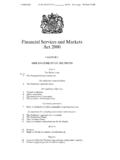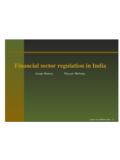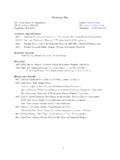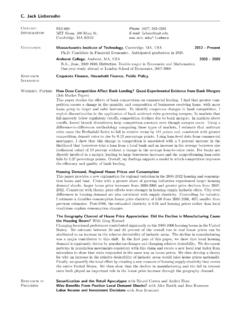Transcription of MiFID2/MIFIR for Commodities Markets - EY - United States
1 MiFID2/MIFIR for Commodities MarketsKey considerations for commodity trading firms1 The revised Markets in financial Instruments Directive ( mifid2 ) was passed into European law in April 2014. It represents a fundamental change for the European financial Markets , especially for energy and commodity firms that deal in financial change is likely to require not only a major implementation effort on the part of previously unregulated entities but also a reassessment of business models and the legal entity structures for a host of market participants. Given the breadth and depth of mifid2 , it is likely to entail far more than just a compliance exercise. Since the introduction of MiFID1 in November 2007, there has been a substantial increase in the level of competition and complexity within financial Markets , including an influx of players using commodity derivatives. As the market in related financial products has grown, the orderly functioning and integrity of Commodities Markets has come under both political and regulatory scrutiny.
2 The 2008 financial crisis served to highlight flaws and weaknesses within the existing regulation which resulted in a wide-ranging review of the original MiFID legislation. The resulting revisions under MiFID22 not only look to address these weaknesses, but also broaden the scope of the regulation with a renewed focus on commodity Markets and commodity market risk management tools and techniques advancing, the evolving convergence, and dependency between physical and financial Markets has become ever more apparent. To reflect this development, mifid2 has been extended to cover instruments and activities that bridge both Markets increasing the scope to capture more commodity players requiring authorization as investment firms. This carries broader implications for the industry, including corporate and non- financial the prospective impacts of mifid2 becomes even more important when considering the wider range of regulatory reforms.
3 The introduction of European Markets Infrastructure Regulation (EMIR)3 and changes to the market abuse regime for commodity Markets , the revisions brought by MAD2/MAR4 and the introduction of Regulation for Energy market Integrity and Transparency5 (REMIT), etc. will, in combination with mifid2 , potentially subject commodity market participants to compliance obligations more akin to those experienced by financial service and investment firms. To this end, the response to regulatory compliance for commodity firms will more than likely extend beyond simply minor operational changes, to a broader rationalisation of the organisation and, in many cases, require a review of the firm s overall strategy. Given many technical aspects of mifid2 are still being considered, commodity firms should not delay determining a response which looks not only at minimising impact but also at identifying potential business mifid2 comes into force in January 2017, preparations must start DIRECTIVE 2004/39/EC of the European Parliament and of the Council on Markets in financial instruments 21 April 2004 2.
4 DIRECTIVE 2014/65/EU of [..] on Markets in financial instruments 15 May 2014, REGULATION (EU) No 600/2014 of [..] on Markets in financial instruments and amending Regulation (EU) No 648/2012 15 May 20143. REGULATION (EU) No 648/2012 of [..] on OTC derivatives, central counterparties and trade 4 July 20124. DIRECTIVE 2014/57/EU of [..] on criminal sanctions for market abuse 16 April 2014, REGULATION (EU) 596/2014 of [..] on market abuse 16 April 20145. REGULATION (EU) No 1227/2011 of [..] on wholesale energy market integrity and transparency 25 October 2011 Are you covered by mifid2 ? mifid2 , like its predecessor, applies across the EU and EEA member States and, with limited exceptions, applies to firms providing "investment services or activities", as defined by the regulation. In addition to considering what sort of investment services or activities a firm undertakes, the regulation also considers the type and quantity of " financial Instruments" a firm trades.
5 mifid2 is intended to capture more commodity instruments than the existing regulation, including physically settling contracts in some rules around precisely which firms fall into scope of mifid2 can be complex and require close consideration by firms that trade if a commodity firm escapes full regulation under mifid2 , a number of requirements will apply regardless to firms who trade in-scope commodity instruments, including adherence to regulatory position limits across commodity classes as we as the compulsory reporting of positions in such for Commodities MarketsUntil now, commodity firms have largely escaped full regulation under MiFID as a result of broad exemptions made available for commodity trading firms, and other non- financial organisations that use regulated financial Instruments predominantly for commercial purposes. The changes under mifid2 are significant in that they remove or limiting the exemptions available to commodity trading and other non- financial firms, as well as broaden the scope of instruments for both physically and financially settled commodity derivatives, classifying more of them as financial Instruments.
6 Why is this important for commodity firms?Changes to financial Instruments applicable to commodity firms (Annex 1 Section C of MiFID)Changes to exemptions applicable to commodity firms (Article 2 of MiFID) T he term Forwards has been added to certain definitions by which commodity derivatives (and potentially physically settled FX*) will be treated as financial Instruments where: i) they must or may be settled in cash (C5), or ii) they are physically settled and for non-commercial purposes (C7) A new platform, an Organised Trading Facility (OTF), has been added to the list of regulated platforms which includes Regulated market (RM), Multilateral Trading Facility (MTF) and Systematic Internaliser (SI), by which instruments traded on the venue will be considered financial Instruments (C6). However: A carve out exclusion is granted explicitly for wholesale energy products covered by REMIT ( , gas and power) traded on OTFs that can be physically settled; National Competent Authorities (NCAs) can offer a temporary six year exemption for Non- financial firms from including such instruments in the clearing threshold calculation and from the risk mitigation requirements under EMIR for physically settled oil and coal derivatives traded on an OTF.
7 Emission Trading Scheme ( ETS ) allowances have been incorporated (C10). The commodity dealer exemption [ (1)(k)] persons whose main business consists of dealing on own account in Commodities and/or commodity derivatives . This exemption has been completely removed under mifid2 . The ancillary activity exemption [Art 2(1)(j)] is available for firms dealing in commodity derivatives provided it is ancillary to their main business and does not comprise investment services (as defined by the regulation). Under mifid2 this exemption requires that quantitative measures be applied to justify whether such activities are ancillary to the main business (applied at group level). The dealing on own account exemption [Art 2(1)(d)] has been explicitly reworded to exclude commodity derivatives under mifid2 although this can still be used cumulatively by commodity firms in conjunction with the ancillary activity exemption , execution of orders in financial Instruments between non-financials directly without further intermediation by third parties treated as ancillary and not dealing on own account while executing client orders.
8 This combined exemption may provide relief for treasury financing activities for some corporates.*Note: The directive definitions (as part of MiFID) require transposition into National Law by domestic NCAs which could lead to differences in interpretation and differences in treatment between member States . I n commodity derivatives, mifid2 brings a whole new regulatory regime .. firms cannot hold back on developing their implementation plans until all the details are available. David Lawton, Director of Markets , at the FCA (UK) mifid2 Conference 20143 mifid2 introduces a number of measures specifically aimed at regulating commodity market participants. The overall compliance burden applicable to commodity trading organisations will depend on their scope of regulated activities under mifid2 as a regulated investment firm, along with the nature and size of their trading activity with respect to financial Instruments.
9 New requirements impacting commodity firms? market infrastructure mifid2 has extended the categories of regulated platforms to incorporate OTFs. This is likely to capture a number of platforms used for commodity trading beyond traditional exchanges, including broker crossing platforms, subjecting them to rules governing platform operations (including trade execution and transparency). mifir , the Regulation, requires that derivatives which are deemed by ESMA as eligible for clearing under EMIR, must be traded on a regulated venue , either an RM, MTF, SI or OTF (this only applies to financial Counterparties FC and Non- financial Counterparties, above the clearing threshold NFC+). Commodity derivatives traded on regulated categories of platform will be considered financial Instruments and therefore subject to both MiFID platform requirements and potentially EMIR obligations (requiring compulsory clearing and inclusion in NFC threshold calculation.)
10 Position limits/controls Commodity derivatives traded on regulated venues will be subject to position limits and position management controls applied by the relevant platform operators. Position limits will be applied on the aggregate net position a person (and group ) can hold at any time in a certain commodity derivative, but will not apply to positions held by NFC entities where trades are deemed to be for commercial purposes . Venue operators are also required to implement position management controls for commodity derivatives, which may force participants to reduce or terminate positions where limits are exceeded, or in some cases introduce liquidity to illiquid Markets where requested to do so. Reports on positions must be made available by venue operators, however these reports will rely on data submitted by market participants on their positions (potentially on a daily basis).Tra d e transparency/reporting Regulated Trading venues will be required to meet pre- and post-trade disclosure requirements, which will require additional data to be supplied by market participants Pre- and post-trade transparency requirements will not apply to transactions undertaken by NFCs deemed for commercial purposes Regulated firms under mifid2 are required to report execution of transactions in financial Instruments to an approved reporting mechanism ( ARM ) on a T+1 basis4 MiFID2/MIFIR for Commodities MarketsRegulated firms are likely to be subject to authorization under domestic regulatory frameworks in addition to mifid2 .










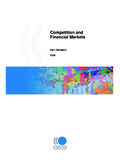
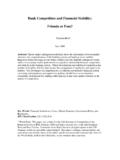
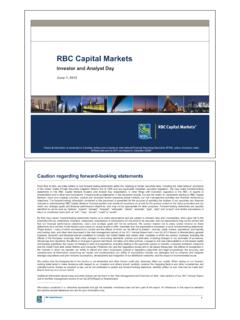
![g^ÔfYf[aYd afkljme]flkak egj][gehd]p& Lae]lgaehd]e]fl [`Yf ]&](/cache/preview/b/5/9/1/d/b/b/8/thumb-b591dbb864bb015fedab5e78503dfa32.jpg)
